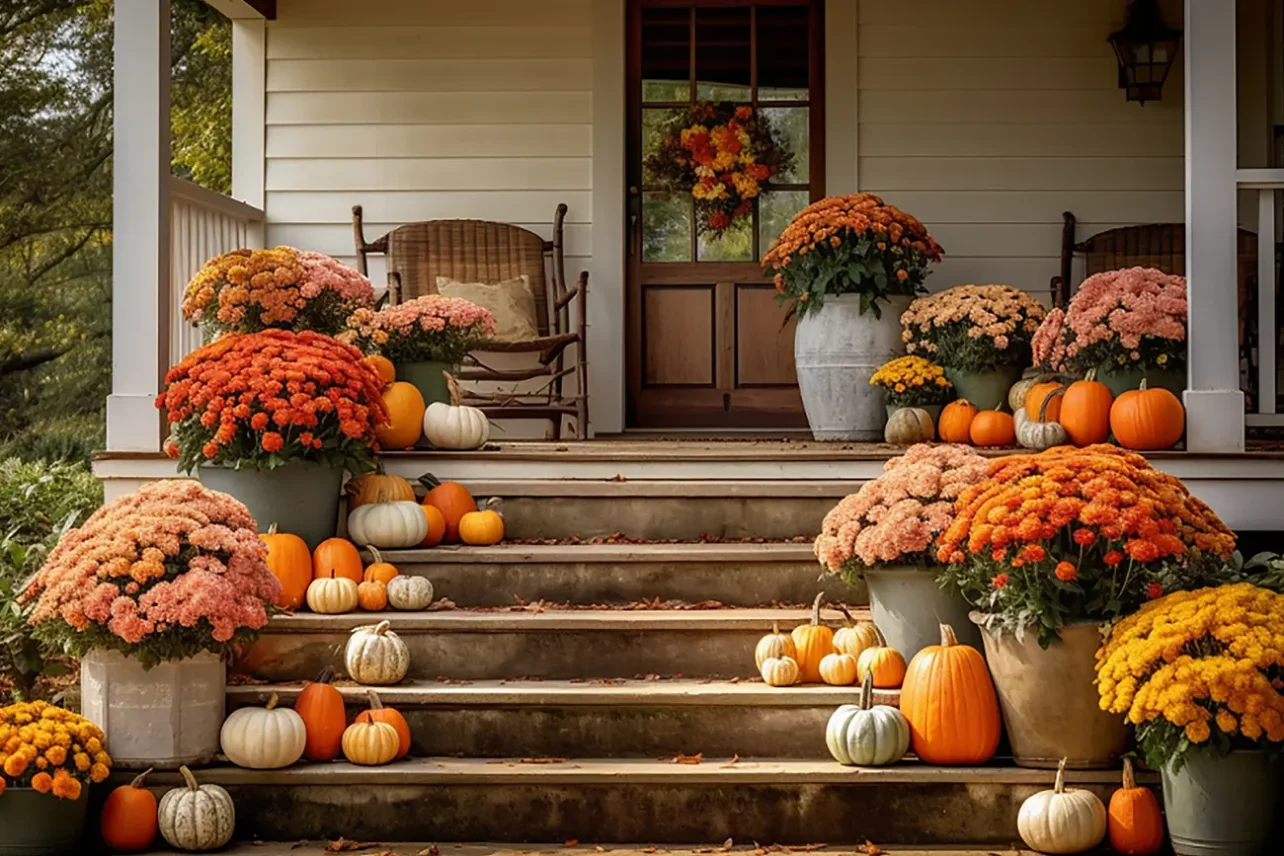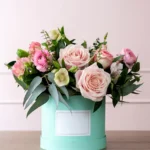Introduction
As November unfolds and autumn brings us the special colors and beauty of fall, the chrysanthemum, or “mum,” emerges as a symbol of the month, bringing with it a burst of color and a rich history full of symbolism and tradition.
These vibrant blooms, with their beautiful layers of petals, have captivated hearts and imaginations across cultures, becoming more than just a flower of the fall.
As November brings cooler weather, chrysanthemums stand as a testament to resilience and beauty, thriving in a season when many other flowers have faded. But beyond their physical allure, these flowers carry within their petals stories and meanings that span time and geography.
The Chrysanthemum: November’s Floral Gem
Chrysanthemums, often affectionately called “mums,” are native to Asia and northeastern Europe. Their journey from the gardens of the East to the rest of the world has been one of admiration and reverence. With their wide range of colors, from deep reds to bright yellows, and their diverse forms, chrysanthemums have become a favorite in gardens and floral arrangements worldwide.
In the context of November, chrysanthemums take on a special significance. They are not just flowers that bloom in the fall; they are symbols of endurance, joy, and the beauty of life even as the days grow shorter and colder. Their ability to bloom vibrantly in a season of transition has made them a symbol of optimism and resilience.
But the chrysanthemum is not just a flower of the fall. It has been a symbol of nobility, rejuvenation, and longevity in various cultures, particularly in Asia, where it has been revered for centuries. Its journey across continents has seen it take on new meanings, becoming a flower that has adorned both moments of celebration and times of quiet reflection.
As we continue to explore the chrysanthemum, its symbolism, and its place in our lives, we’ll find that this November gem is not just a flower, but a storyteller, silently narrating tales of our human experiences, beliefs, and expressions.
Symbolism of the Chrysanthemum
The chrysanthemum, with its multitude of petals and array of colors, has been a source of inspiration and symbolism across various cultures. It’s a flower that has spoken a language of beauty, resilience, and depth, understood and celebrated in different parts of the world.
In Japan, the chrysanthemum is a symbol of the Emperor and the Imperial family, representing longevity, rejuvenation, and nobility. The annual “Festival of Happiness” celebrates the chrysanthemum, showcasing its significance in Japanese culture and tradition.
In China, chrysanthemums are celebrated in the fall, particularly during the Double Ninth Festival. They are symbols of longevity and endurance, believed to bring good luck and ward off evil spirits. The flower’s ability to bloom into the late autumn has made it a metaphor for life’s persistence in the face of adversity.
In Western cultures, chrysanthemums have taken on varied meanings. They are often associated with joy, optimism, and the beauty of life. However, in some European countries, they are also associated with death and are used to honor loved ones who have passed away, particularly on All Saints’ Day.
The chrysanthemum’s symbolism extends beyond cultural boundaries, often representing friendship, well-being, and the joy of life. Its robust nature and ability to thrive in cooler temperatures reflect a kind of steadfastness and resilience, making it a symbol of strong, enduring relationships.
In the following sections, we’ll explore how the chrysanthemum, with its rich symbolism, has permeated various aspects of our lives, from gardening and decor to celebrations and rituals, continuing to be a steadfast companion in our journey through the cycles of life.
Chrysanthemums in Gardening and Decor
Chrysanthemums, with their stunning array of colors and forms, have become a cherished addition to gardens, homes, and various decor scenarios worldwide. Their intricate petals and vibrant hues have a way of instantly uplifting spaces and creating a warm, inviting ambiance.
In gardening, chrysanthemums are often celebrated not just for their aesthetic appeal but also for their versatility and ability to flourish in cooler temperatures. Whether you have a sprawling garden or a cozy balcony, chrysanthemums can find a place, offering their vibrant colors and subtle fragrance to your space. Moreover, they are known for their long-lasting blooms, making them a practical choice for gardeners seeking to extend the floral display into the fall.
When it comes to decor, chrysanthemums have graced numerous occasions with their presence. In festive seasons, chrysanthemum arrangements often adorn tables and entryways, creating a canopy of warmth and celebration. Their rich hues have become synonymous with autumnal celebrations, be it a quiet, intimate gathering or a grand, festive occasion.
In weddings and other celebrations, chrysanthemums are a popular choice for floral arrangements and bouquets. Their wide range of colors and forms allows for creative and personalized expressions, silently blessing the occasion with their symbolic meanings.
Chrysanthemums also find a place in home decor, where their vibrant colors and intricate forms breathe life into spaces, creating a cozy, cheerful environment. Whether arranged in a simple vase or used in more elaborate arrangements, they have a way of making a space feel like a celebration of life’s vibrancy and beauty.
Chrysanthemums in Art and Popular Culture
Chrysanthemums have not only adorned our gardens and celebrations but have also found a significant place in art and popular culture, becoming symbols, metaphors, and muses for artists, writers, and creators across various mediums.
In literature, chrysanthemums often emerge as symbols of beauty, resilience, and the intricate dance of life and death. Poets and writers have been captivated by their intricate petals and the depth of their symbolic meanings, often using them to explore themes of endurance, rejuvenation, and the fleeting nature of beauty. From classic literature to contemporary writings, chrysanthemums have been woven into narratives, silently expressing unspoken emotions and pivotal moments.
In visual arts, chrysanthemums have been a beloved subject, capturing the attention of painters and artists with their intricate forms and the contrast they offer against the varied palettes of different seasons. They have been depicted in still life paintings, photographs, and various other visual mediums, each representation exploring a different facet of their beauty and symbolism.
Cinema and media have also embraced chrysanthemums, utilizing their symbolic and visual appeal to enhance narratives and visual storytelling. From being a vibrant backdrop in festive scenes to symbolizing poignant moments of reflection, chrysanthemums have silently enhanced cinematic storytelling, adding a layer of visual and symbolic depth to scenes and narratives.
In music, chrysanthemums have found their way into lyrics and melodies, becoming metaphors for endurance, beauty, and the cycles of life. Musicians and songwriters have been inspired by their beauty and the tales they silently tell, creating compositions that explore the myriad emotions and stories associated with them.
Conclusion
In their vibrancy of beauty and color, chrysanthemums have silently told stories that span cultures, geographies, and times. From the imperial gardens of Asia to the serene, reflective spaces of Western cemeteries, these blooms have been more than mere spectators; they have been integral, albeit silent, participants in our human experiences, celebrations, and reflections.
Chrysanthemums have witnessed our joys and sorrows, our moments of celebration and quiet reflection, and have found a place not just in our gardens but also in our arts, cultures, and hearts. They have been symbols of endurance, rejuvenation, and the joy of life, accompanying us through the cyclical journey of our existence, offering their intricate beauty and subtle fragrances as silent expressions of the myriad emotions and moments we experience.
May we continue to find stories, inspirations, and silent companionship in the chrysanthemum, allowing it to add beauty to our moments and its symbolic depth to resonate with our experiences and expressions. And as we navigate through the various seasons of life, may the chrysanthemum’s resilience, beauty, and depth be a constant, reminding us of the beauty and endurance of our human experience.


